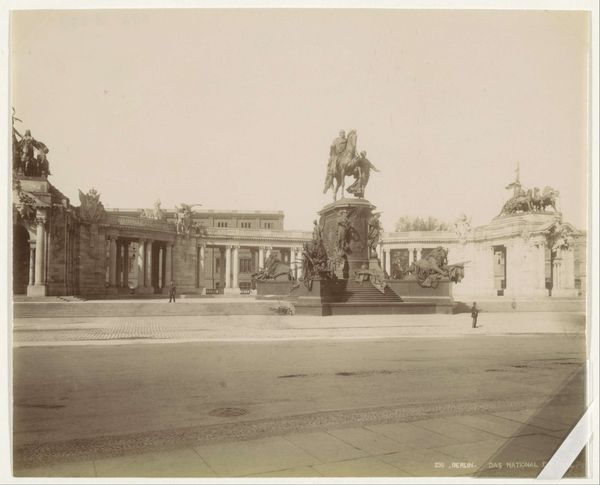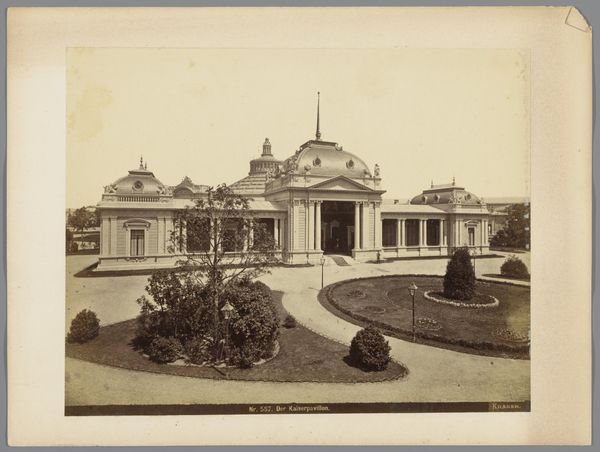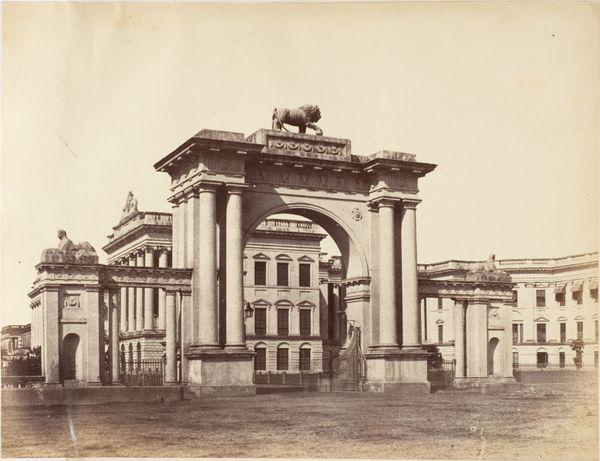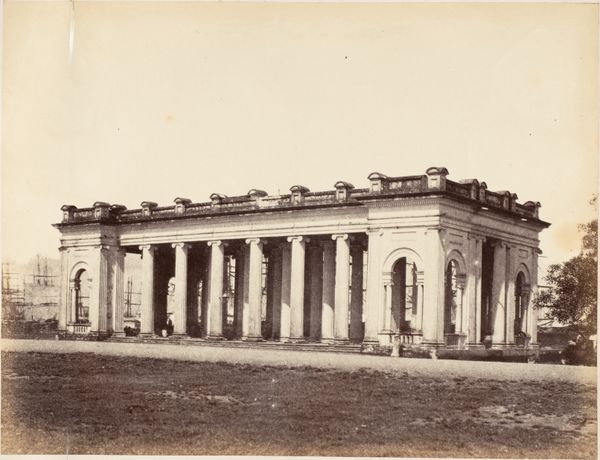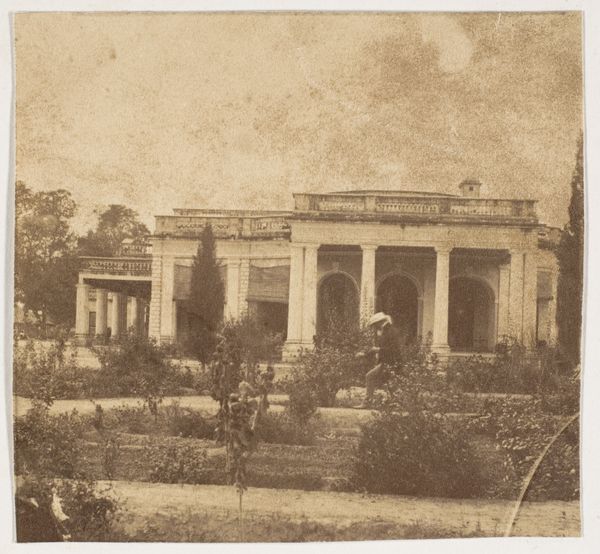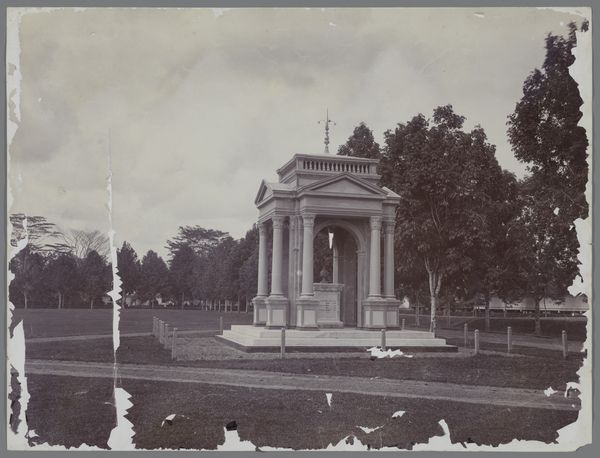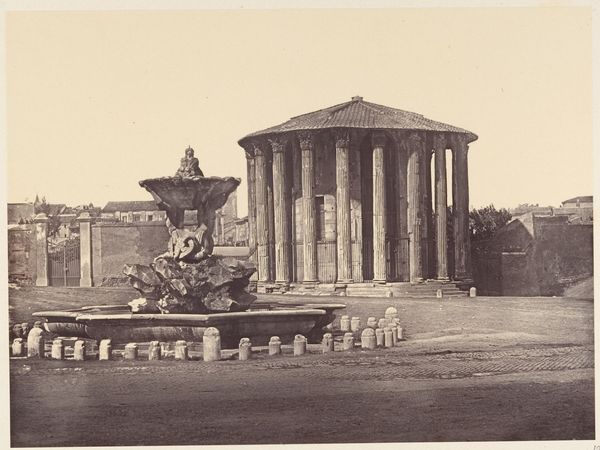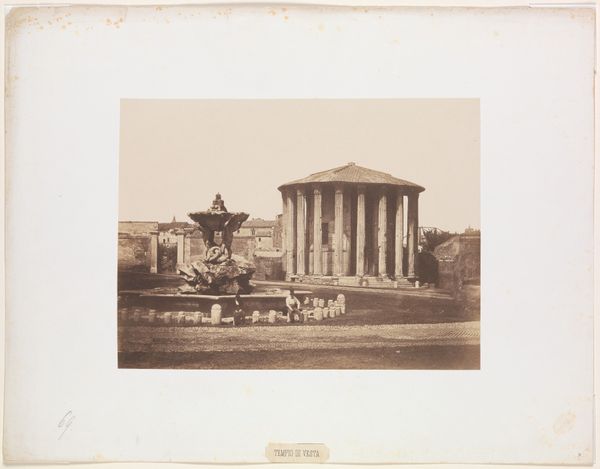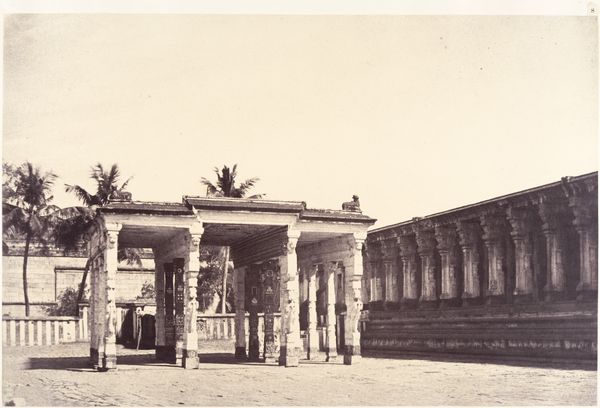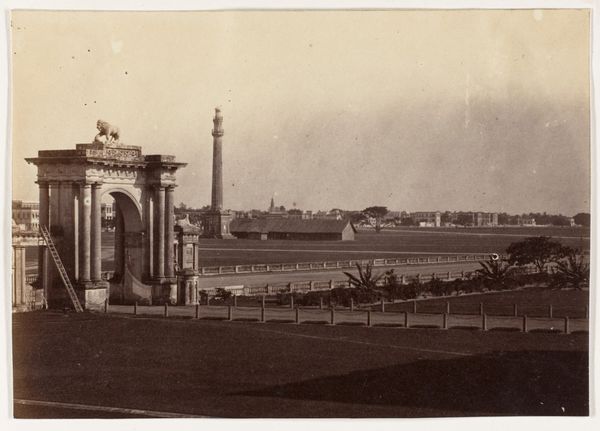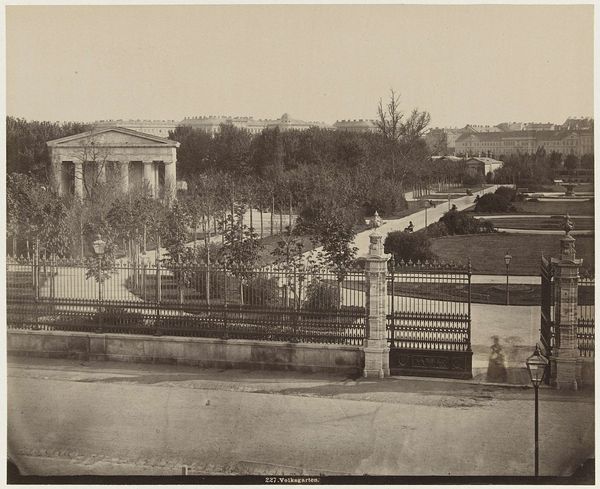
photography, architecture
#
landscape
#
outdoor photograph
#
outdoor photography
#
photography
#
orientalism
#
architecture
Dimensions: Image: 23.9 x 34.8 cm (9 7/16 x 13 11/16 in.) Mount: 45.3 x 57.4 cm (17 13/16 x 22 5/8 in.)
Copyright: Public Domain
This is a photograph of the Neerali Mundapam, taken by Linnaeus Tripe, likely in the 1850s during his time as the official photographer for the British East India Company. Tripe’s photographs are fascinating documents of British colonialism. This image, with its formal composition and stark lighting, presents the Mundapam as a relic. It echoes the visual language used to document classical ruins in Europe, framing India's architectural heritage as something to be cataloged and studied, a resource for the colonizing power. Consider the role of institutions like the East India Company and the museums that collected these images in shaping perceptions of India during this period. Was Tripe simply documenting, or was he participating in a project of cultural appropriation? To understand this image fully, we can turn to archival sources such as the Company's records, travelogues, and even early guidebooks. These resources can reveal the complex interplay of power, knowledge, and representation that shaped the colonial encounter.
Comments
No comments
Be the first to comment and join the conversation on the ultimate creative platform.

